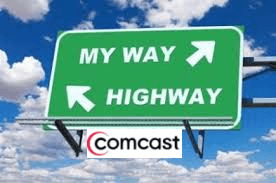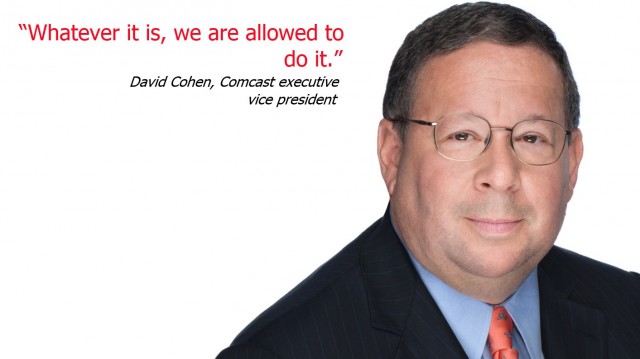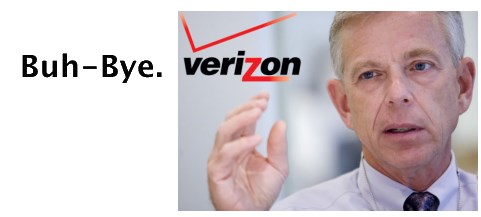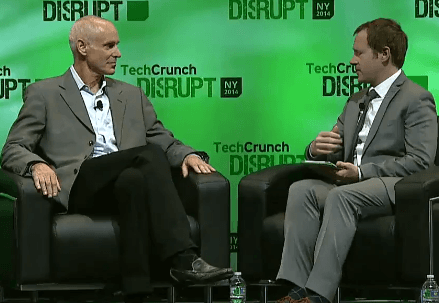Comcast: Usage-Based Billing for All Customers Within 5 Years; ‘We’re Also Allowed to Do Fast Lanes’
 Comcast will introduce usage-based billing on all of its broadband customers nationwide within five years, whether they like it or not.
Comcast will introduce usage-based billing on all of its broadband customers nationwide within five years, whether they like it or not.
Comcast’s executive vice president David Cohen told Variety he predicts the new usage limit will likely be 350GB a month but could increase to 500GB in 2019. Cohen claims consumers in usage-capped test markets prefer a preset usage limit and an overlimit fee of $10 for each additional 50GB of usage.
But Stop the Cap! has learned at no time has Comcast surveyed customers about whether they want their Internet usage metered or capped. That question is evidently not an option.
If Time Warner Cable territories are merged under the Comcast brand, usage billing would likely immediately follow.
Usage caps will go a long way to protect Comcast’s cable television package from online video, which if viewed in significant amounts could put customers over their monthly usage limit and subject them to higher fees.
“We’re trying to go slowly, not out of a regulatory concern (but because) we have no desire to blow up our high-speed data business,” he said.
 If the merger is approved, Comcast will face significantly less competition in many Verizon service areas also served by Time Warner Cable. Verizon FiOS expansion has ended and the company continues to de-emphasize its DSL service, which is the only broadband competition Time Warner Cable faces in many upstate New York and western Massachusetts communities.
If the merger is approved, Comcast will face significantly less competition in many Verizon service areas also served by Time Warner Cable. Verizon FiOS expansion has ended and the company continues to de-emphasize its DSL service, which is the only broadband competition Time Warner Cable faces in many upstate New York and western Massachusetts communities.
An unrepentant Cohen also doubled down on paid prioritization — Internet fast lanes — declaring regardless of what the FCC decides on Net Neutrality, Comcast still has the right to offer paid prioritization to customers.
“Whatever it is, we are allowed to do it,” said Cohen, speaking at the MoffettNathanson Media & Communications Summit in New York. “We are not sure we know what paid prioritization, or what a fast lane, is. Fast lane sounds bad… (but) I believe that whatever it is, it has been completely legal for 15 or 20 years.”
The way Comcast’s lawyers read “Title II,” even if the FCC declares broadband ISPs to be common carriers, Cohen says Comcast will go right on selling prioritized access, claiming Title II doesn’t prohibit paid prioritization — indeed, he said, “the whole history” of Title II is that carriers are allowed to provide different levels of service at different prices, reports Variety.
Cohen said he expects Washington regulators will promptly approve the company’s buyout of Time Warner Cable with no delays, insisting the deal is “not that difficult” in terms of antitrust implications.


 Subscribe
Subscribe Effective June 1st, all Sprint contract and prepaid customers, as well as those using Virgin Mobile USA and Boost will find their wireless data speeds throttled if Sprint finds they are among the top 5% of users on a congested cell site.
Effective June 1st, all Sprint contract and prepaid customers, as well as those using Virgin Mobile USA and Boost will find their wireless data speeds throttled if Sprint finds they are among the top 5% of users on a congested cell site. Sprint says the throttle will only be activated on “congested cell sites” and will impact WiMAX, 3G and LTE 4G networks owned by the company. Anyone who has used Sprint’s 3G network will discover most urban and suburban Sprint cell towers are frequently congested, judging by the low speeds many customers endure. Rural customers or those served on the edge of a suburban area may never find themselves throttled and Sprint promises once traffic clears, the throttle is shut off.
Sprint says the throttle will only be activated on “congested cell sites” and will impact WiMAX, 3G and LTE 4G networks owned by the company. Anyone who has used Sprint’s 3G network will discover most urban and suburban Sprint cell towers are frequently congested, judging by the low speeds many customers endure. Rural customers or those served on the edge of a suburban area may never find themselves throttled and Sprint promises once traffic clears, the throttle is shut off.


 Smit also promised major broadband speed upgrades and other improvements for Time Warner Cable customers, but nobody mentioned Comcast’s gradual reintroduction of usage caps on residential broadband accounts.
Smit also promised major broadband speed upgrades and other improvements for Time Warner Cable customers, but nobody mentioned Comcast’s gradual reintroduction of usage caps on residential broadband accounts. As of May 1st, Frontier Communications has raised the price of its standalone DSL service $5 a month, primarily because its competitors have also raised prices.
As of May 1st, Frontier Communications has raised the price of its standalone DSL service $5 a month, primarily because its competitors have also raised prices. Despite the speed increases, cable competitors still made their presence known. Most cable companies sell faster service than Frontier offers and on the low-end, Time Warner Cable’s 2Mbps $15 broadband package, marketed to current DSL customers, was acknowledged to have an impact by Wilderotter, but not enough to bring a significant change in competitive intensity.
Despite the speed increases, cable competitors still made their presence known. Most cable companies sell faster service than Frontier offers and on the low-end, Time Warner Cable’s 2Mbps $15 broadband package, marketed to current DSL customers, was acknowledged to have an impact by Wilderotter, but not enough to bring a significant change in competitive intensity.